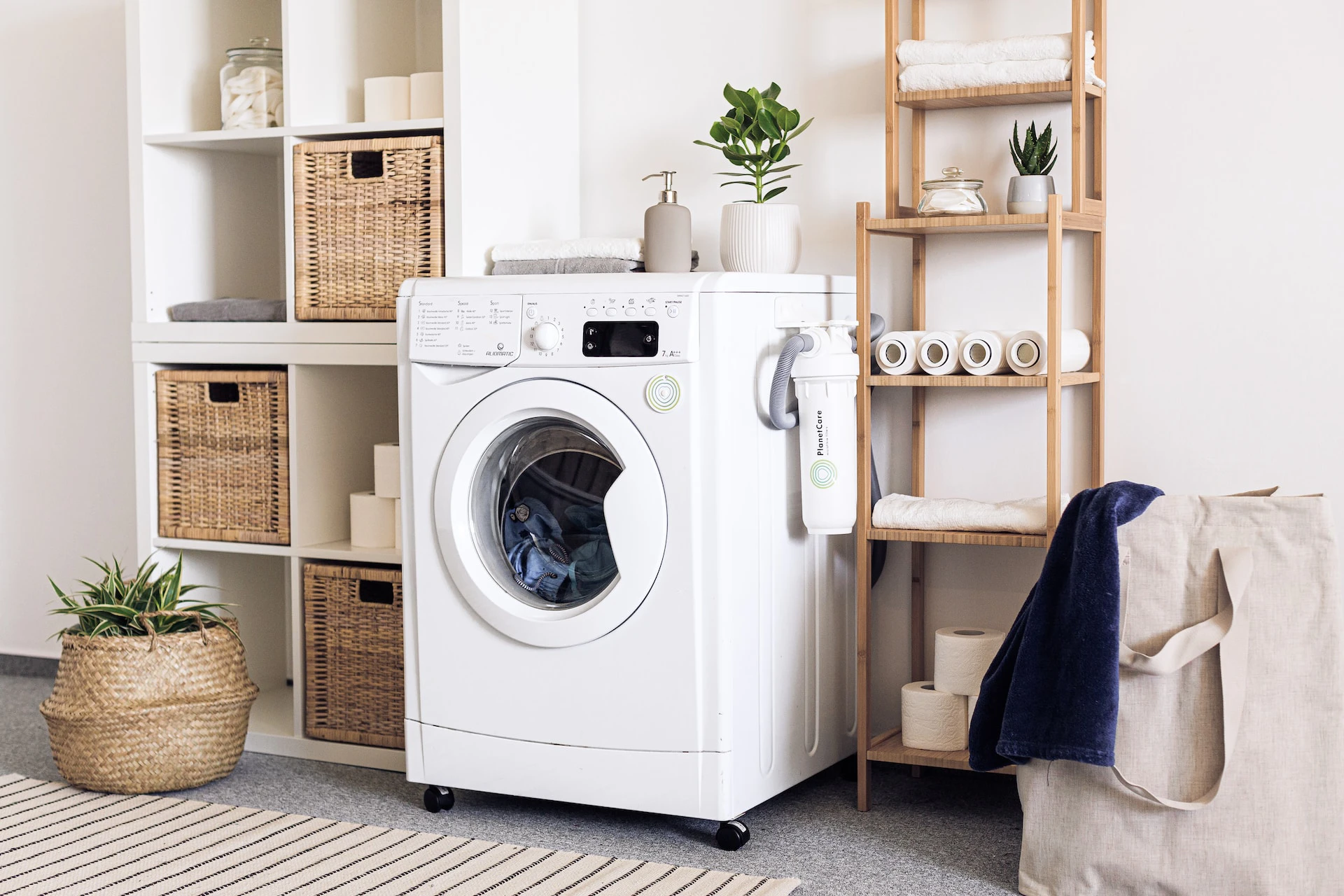By adopting sustainable water management practices and conserving water, we can all contribute to environmental preservation and ensure the availability of this vital resource. In this article, we will explore various ways to conserve water in the home and discuss other sustainable practices.
Water management in the home
Conserving water in the home is a crucial step towards sustainable water management. By implementing small, yet effective practices, we can reduce water waste and contribute to a larger impact. Here are some practical tips for conserving water:
Fix leaks
A small leak may seem insignificant, but it can waste a significant amount of water over time - according to Thames Water, they distribute 2.6 billion litres of water per day, and almost a quarter (24%) of that water is lost through leaks1. Regularly check and promptly repair any leaks in faucets, toilets, or pipes.
Water-efficient fixtures
Install water-saving devices such as low-flow showerheads, faucet aerators, and dual-flush toilets. These fixtures reduce water usage without compromising functionality.
Shorter showers
Limit your shower time and aim for shorter showers. Consider using a shower timer to help you keep track of time and reduce unnecessary water usage. According to Wessex Water, the average shower in the UK uses about 12 litres of water a minute, so reducing your shower time by just two minutes could conserve around 24 litres of water2. This is a huge saving by making a very simple change to your routine!
Efficient dishwashing
When hand washing dishes, fill a basin with soapy water instead of letting the tap run continuously. This practice can save a substantial amount of water. When using a dishwasher, make sure it's fully loaded before running a cycle.

Washing clothes
Wait until you have a full load before running the washing machine. If possible, choose the most appropriate water level setting for smaller loads. Additionally, consider hand washing your clothes, but be sure to use detergents that are environmentally friendly.
Watering plants
Water outdoor plants and lawns during the early morning or late evening to minimise evaporation. Use a watering can or a drip irrigation system instead of a hose to target specific areas and reduce water waste.
Other sustainable water management practices
The following practices are more in-depth methods of conserving water:
Greywater recycling
Greywater is wastewater generated from sources like sinks, showers, and washing machines. By treating and reusing greywater for irrigation or toilet flushing, homeowners can reduce freshwater usage and contribute to sustainable water management.
To ensure the water is ready for use, it goes through pre-treatment to remove solids, followed by various biological and physical treatments such as to remove contaminants. Disinfection kills remaining pathogens. This treated water can be stored and used for non-drinking purposes such as irrigation or flushing toilets. Regular monitoring and maintenance are essential for system performance and compliance with important standards.
Rainwater harvesting
Rainwater harvesting is a practice that has gained significant attention in recent years due to its potential for water conservation and sustainability. It involves collecting and storing rainwater runoff from rooftops, gutters, and other surfaces for future use. By capturing rainwater, homeowners can reduce their reliance on traditional water sources, lower water bills, and alleviate stress on local water supplies.
There are a few key components that go into rainwater harvesting. First, the rainwater is collected from surfaces, such as roofs. Gutters and downspouts are then used to direct the rainwater from those surfaces into rainwater storage tanks. From there, the water is passed through a filtration system to remove any impurities and debris. The rainwater is then run through a distribution system through the house for its final destination and uses - toilet flushing, washing machines and dishwashers, and garden irrigation.
If you can’t retrofit your home to include rainwater harvesting pipes, you can install a tank in your garden and use that as needed. It is important to note that without treatment, rainwater is not fit for consumption.

Smart irrigation
Smart irrigation refers to an advanced system that utilises technology to optimise the watering of plants and landscapes. It combines sensors, weather data, and automation to deliver water efficiently and effectively, minimising waste and conserving resources. The system typically includes various components such as moisture sensors, weather stations, controllers, and actuators.
With smart irrigation, water is delivered precisely to the plants' requirements, reducing water consumption and minimising runoff. Additionally, it offers the convenience of remote monitoring and control, allowing users to adjust settings and receive notifications through smartphones or computers. Overall, smart irrigation enhances water efficiency, promotes healthier plant growth, and contributes to sustainable water management practices.
This is something you can explore on a small scale, or if it’s something you’re particularly interested in you can make the investment and outfit your whole green space.
Sustainability and water management in the home
These are just some of the examples of water management you can use to be more sustainable and eco-friendly at home. On top of water management, there are plenty of ways to be more sustainable at home, such as using eco-friendly building materials or improving your EPC score.
Read our article about how to make your home more sustainable on a budget to keep the savings coming and empower yourself with the knowledge that you’re contributing to a more sustainable future.
References and sources
Important information
Your home may be repossessed if you do not keep up repayments on your mortgage.
There may be a fee for mortgage advice. The actual amount you pay will depend on your circumstances. The fee is up to 1% but a typical fee is 0.3% of the amount borrowed.




